How To Choose The Right Borescope
Rigid Borescopes
The heart of a rigid borescope design is the relay lens system. Gradient Lens Corporation’s patented endoGRINs® design makes lens manufacturing and assembly easier and less costly, without sacrificing image quality.

Our patented endoGRINs® gradient index lenses are the core technology of Hawkeye® Pro and Classic Rigid Borescopes. The elegant simplicity of the endoGRINs design gives excellent optical quality at a much lower cost than traditional alternatives, like the Hopkins design, which uses many expensive micro-lenses and optical glass rods. As described above, rigid borescopes use traditional, glass optics to relay the image. If your entry path is straight, a rigid borescope delivers excellent image quality and can be more cost-efficient than other types of borescopes, such as fiberoptic or video borescopes.
Fiberoptic Borescopes
Fiberoptic borescopes use optical glass fibers to relay the image. Resolution depends on the number of fibers and their diameter. Each fiber forms a pixel in the final image. If your entry path is not straight, fiberoptic borescopes have the advantages of flexibility and articulation.

Video Borescopes
When compared with any other type of borescope, video borescopes deliver the best combination of image quality and convenience. Videoscopes transmit light through the objective lens to miniature video cameras, which then convey the image to a portable handheld monitor or laptop and desktop computers. When portability, still and video image capture, and image storage and documentation are key factors, a videoscope is the right choice.

Direction-of-View (DOV)
Hawkeye Pro and Classic Rigid Borescopes see straight-ahead (0°) and sideways (90°) with a mirror tube that slides over the borescope tube, making them two borescopes in one. The Hawkeye Pro Slim Rigid also offers a special dedicated 30° Direction of View scope using a prism.

The mirror tube rotates the view over a full 360°, using the knurled knob. Our new mirrors are robust and durable for easy cleaning.
Field-of-View (FOV)
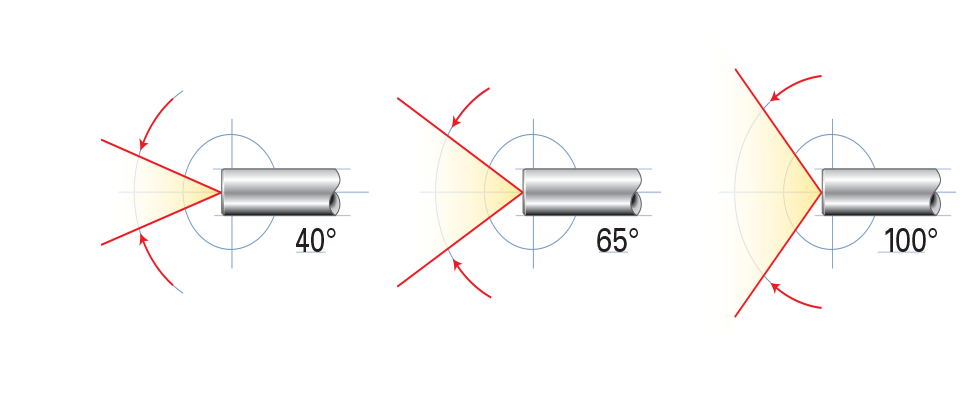
Most inspection situations need a “normal” objective lens (like a typical camera) with an angle of about 40°.
Wider lenses see more, but at a lower magnification, giving less detail. Magnification increases as the borescope approaches the subject, unlike a microscope objective, which gives a fixed magnification at one object distance.
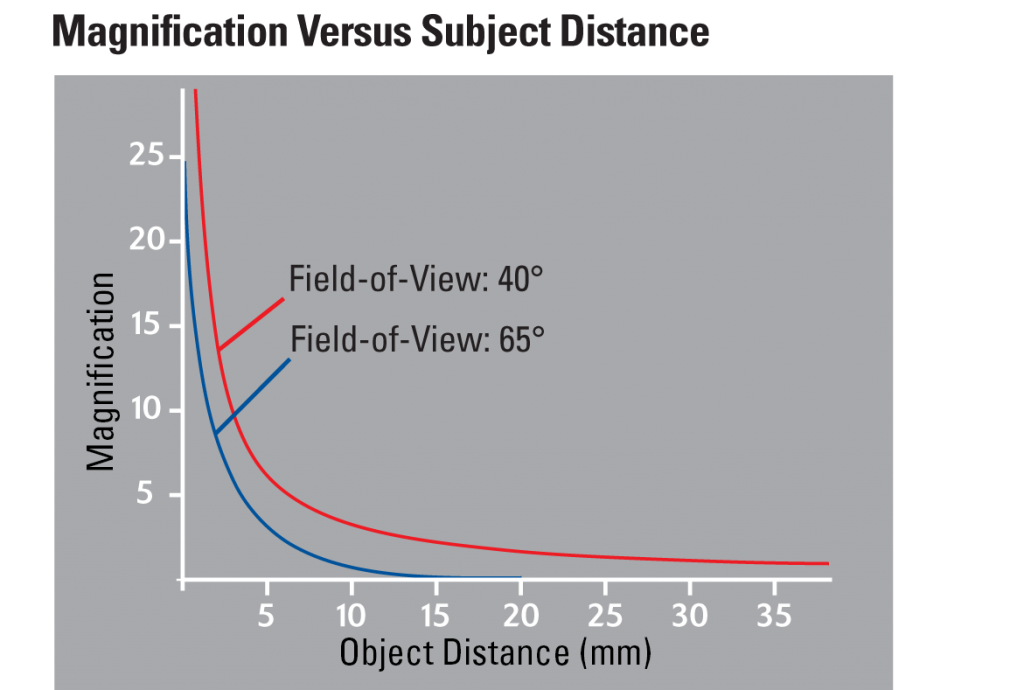
Hawkeye® Rigid Borescopes:
Choose a Hawkeye® Rigid Borescope when the entry path is straight. Compared to other types of borescopes, Rigids have better image quality and are more durable and less expensive than flexible scopes. Hawkeye® Pro Rigid Borescopes have DOV’s of 0°, 30°, and 90°.
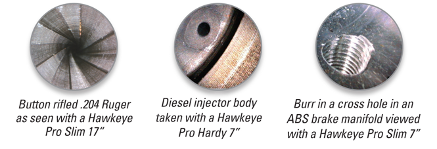
Hawkeye® Flexible Borescopes:
When your entry path is curved, you’ll need a Hawkeye® Pro, Classic, or Blue Flexible Borescope. With 0-, 2-, or 4-way articulation, up to 25,000 pixel image resolution, and flexible, durable, tungsten sheathing, Hawkeye® Flexible Borescopes are the finest fiberscopes on the market.
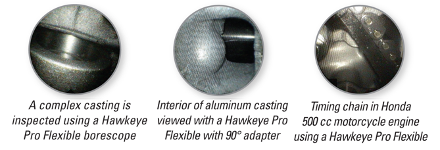
Hawkeye® Micro Flex & Semi-Rigid Borescopes:
Hawkeye® Pro MicroFlex Semi-Rigid and Flexible Borescopes offer diameters as small as 0.5 mm, and a 10,000 or 30,000 fiber image bundle, all in “bendable,” semi-rigid, Nitinol or polymide sheath.
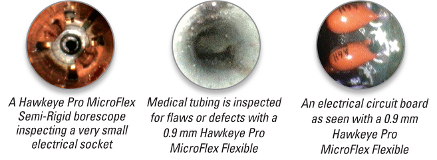
Hawkeye® Video Borescopes:
The Hawkeye® V3 HD Video Borescopes represent our next generation of fully portable, articulating, videoscopes. The innovative custom engineered image processor allows users to view or capture bright, crisp, clear images with lifelike colors. The servo driven articulation allows users to easily navigate even the toughest to access inspections.
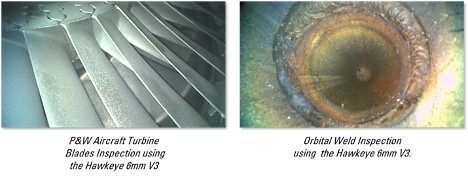
If you have any questions about which type of borescope is right for you, then give us a call at 800-536-0790